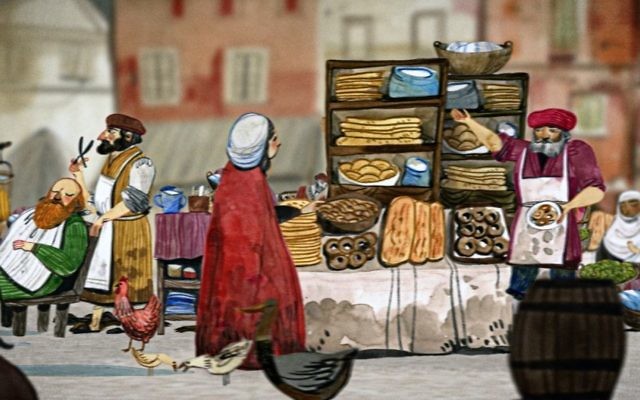AJFF Review: ‘Venice Ghetto’ Vibrant After 500 Years
By Tiffany Parks
To mark the 500th anniversary of the Venice Ghetto, director Emanuela Giordana has created a documentary that relies on Lorenzo, a young Jewish American who, on a quest to discover his family’s Venetian roots, narrates the broader history of the ghetto.
What makes Giordana’s documentary, “The Venice Ghetto: 500 Years of Life,” so successful are the various narrative techniques she uses to bring the history of Europe’s oldest Jewish ghetto to life.
When wide-eyed, enthusiastic Lorenzo arrives at his Aunt Anna’s house, he is whisked away by her and his young cousins to see ghetto landmarks. Shakespeare’s “The Merchant of Venice” is being produced on the old square, and snapshots are shown throughout the documentary as a metaphor to mark the long, dark anti-Semitic history of the city.
They visit the old cemetery Lido di Venezia, where Lorenzo learns about the colorful Rabbi Leon of Modena. He also discovers the 400-year-old graves of his ancestors the Luzzattos. They visit the Spanish and Levantine synagogues, the old museum, Holocaust memorials, and various other landmarks.
Throughout the film, the director uses scholars to undergird Lorenzo’s narrations with rich, historical facts. What makes the information interesting is that modern cartoon figures are used to enable the vibrancy of the past to leap from the screen. According to the scholars, the word “ghetto” is a toponym. It was the area where remains were thrown away or the “throw-away” place.
The ghetto was divided into two parts, Ghetto Nuovo and Ghetto Vecchio. Furthermore, the scholars discuss how in 1516 the German and Italian Jews were forced to live in the ghetto, the strict curfews and walls that were made to keep them confined, the fact that Jews were not allowed to own property until the late 1700s, and how they were continually expelled.
During the 1600s, Rabbi Simone Luzzatto, one of Lorenzo’s ancestors, wrote a famous discorso persuading the ruling class not to evict the Jews.
The turbulent history of the Venetian Jews gives insight into how Hitler was able to stir up anti-Semitic feelings in the 20th century. Some of Lorenzo’s family members, in particular a man who served as a brigadier general in World War I, were victims of Hitler’s hatred.
Still, the resilience of the Jews of Venice is seen when Lorenzo’s family members dance and sing for a cousin’s bar mitzvah celebration.
The ghetto was meant to be a negative symbol placed on the Jews of Venice, but they have turned it into a rich, vibrant cultural area.




comments